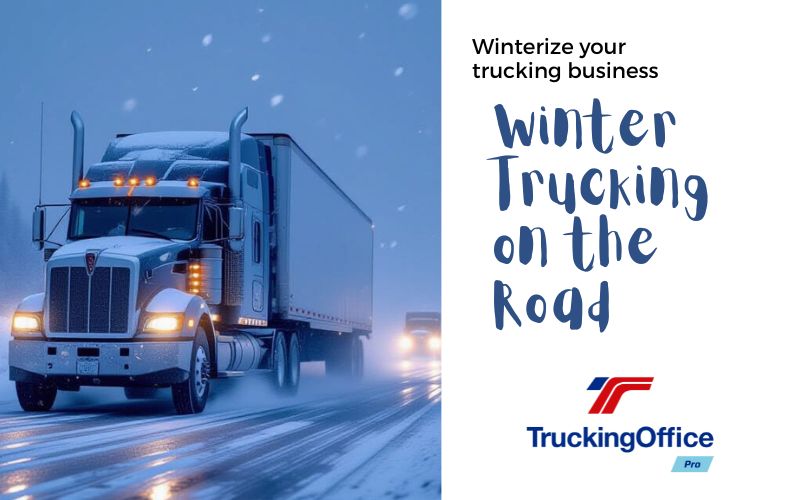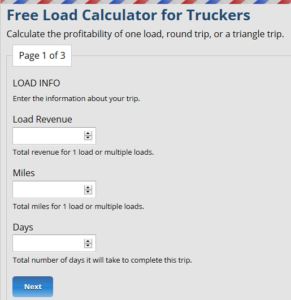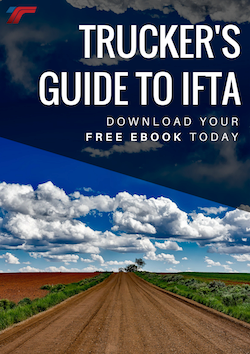Winter trucking isn’t the same as summer on the road. The weather is obvious. Rain, sleet, snow, puddles around the fuel pumps, and that one guy in shorts who’s filling his fuel tank like it’s July. While a sunny day in midwinter might be pretty with the snow on the mountains, those are rare compared to days of cold coffee and searching under the passenger seat for our fueling gloves. Of course, we all think we’re the one good driver out there. Until the trailer starts doing interpretive dance on black ice. Winter trucking is a different challenge. Winter trucking means every rest stop smells like diesel and wet gloves.
Winter Trucking Prep
Does it matter what order you prep for the winter? Everything needs to be done. Tires checked and replaced if necessary. New wiper blades. Checking the braking system.
There are dozens of checklists on the internet on how to prepare your rig for winter. Winter prep season means spending more time with your tire gauge than your family. At least the tires don’t talk back.

All the prep work a trucker has to do is based on their rig, where they live, and what they haul. All of that work isn’t optional, it’s vital to your trucking business.
Of course, you know that. So what are we talking about?
Winter trucking business prep. Taking a look a the business of your trucking business.
Discovering cash flow, unnecessary expenses, and ways to get prepared for emergencies can be done while you’re waiting in the dock for a pickup or a delivery.
Winter can slow freight or increase costs — fuel, maintenance, and downtime add up fast.
Winter Reserve Funds
When do breakdowns on the road happen?
Breakdowns never happen in front of a diner with hot coffee and pie. It’s always mile marker 247, right after you said, ‘We’re making good time! When the roads are messy and the temperature is negative 8,000 degrees.
Running a truck in the winter is extra stress on the equipment, so preparing financially for an on-the-road emergency is smart.
Repair Funds and Emergency Living Funds
Some truckers have a debit card that only gets pulled out for the on-the-road emergency. We recommend a $5,000 emergency fund.
These days, we suggest that’s the minimum. And setting aside that kind of money is hard. The trucking industry is suffering these days with low rates and high costs. Shippers want to balance their budgets on the truckers’ backs. Fuel rates that range from unbelievable to impossible.
Living expenses still rack up while we’re off the road. Those loan and insurance payments still must be paid. Having 3 to 6 months of expenses in an emergency fund is recommended by most business websites.
How to Save?
Dave Ramsey – you know Dave, he’s the guy who’s all about living debt-free – makes a few suggestions.
- Pay into a savings fund as regularly as you do your mortgage. Think of it as a debt you must pay.
- Setting aside a percentage of the month’s revenue is one option.
- Making a consistent dollar deposit into the debit account regularly.
Using a debit account with your own money may save you from using a credit card and paying enormous amount of interest.
Track Expenses
How often do you look at your financial statements? Credit, debit, or fuel card purchases?
The number of fraudulent charges by scammers is going through the roof. My 87-year-old mother has been a victim of a recurring scam for years now that requires us to review every single VISA charge with an absurd amount of checking.
“Mom, did you buy this?”
“Mom, did you order that?”
Mom doesn’t like that. We don’t either.
The only way to protect ourselves is to track expenses rigorously – every month.
Business Expenses
Some business expenses are regular. Mortgages, loans, insurance, – we’re used to those. They don’t usually come out of our credit cards. But plenty of truckers track their expenses using their credit cards.
For example, some truckers use one credit card for tax-deductible expenses, such as equipment purchases. They have a separate card for fuel, and another card for Netflix and ESPN streaming services, and coffee. (Can’t forget coffee.)
All of those expenses are money out of our pockets, tax-deductible or not.
Sometimes we use cash. With restaurants adding a surcharge for using a credit card to cover the cost that VISA or MasterCard charges the vendor, using cash makes sense. (And Abraham Lincoln doesn’t judge us when we get pie.)
How to track everything?
The simplest way we see is to add all expenses into a software program that will allow you to snap a pic with your smartphone and upload the data for you.
TruckingOffice PRO does that. Even hand-written receipts can be scanned and uploaded.
Take the time to look at the expenses. Over time, you’ll find that the seasons have an impact on spending habits. More coffee in the winter, more soda pop in the summer – that’s easy. You may find other expenses that are optional – and can be cut.
Review Monthly Expenses
Refinancing loans may not be in the immediate future, but looking at regular expenses might be.
For example, Mom just decided to cut the cable when she realized how much she was spending on premium packages that had crept onto her bill. Now she’s happy with a Roku remote and paying $200 LESS per month.
Somehow, there’s always one $8.99 charge that you can’t remember signing up for — probably for premium weather updates we never remembered to check.
There are other regular expenses that should be reconsidered annually.
Insurance: Medical, Homeowners, and Business
Are you paying too much for insurance?
Taking some time to talk to insurance brokers may find lower rates for your truck, your home, and your medical insurance. In the USA, medical insurance coverage runs along the calendar year – January to December – but buying private medical insurance starts in October and runs through December.
Truck Insurance:
Is your towing still covered? What about liability? Roadside assistance? Considering the age and condition of your rig, you may want to make some changes.
Subscriptions and Contracts:
You’ve probably seen the video on YouTube of the kid who has three subscriptions to Instacart. (I hope that’s AI and not real.)
But the problem is real – subscriptions get away from us. Nothing says fiscal responsibility like realizing you’re stockpiling artisanal Guava Jam with Bacon while wondering why you can’t afford new wiper blades. While you might think about putting a couple of those jars into your truck along with some crackers for snacks, it’s also worth a thought to look at the contracts and subscriptions you use for your truck.
If you’re using a different software for
Then it’s time to reconsider what you’re paying for. Each of those – which may claim to be free – may end up costing more than you think. Add up those different software packages, and you may be surprised when you compare those costs to a single complete TMS trucking software.
A second look at the ELD contract might also reveal an area for improvement. Many ELD companies offer more options than an owner-operator needs — at a price. A price higher than we want to pay.
Using a no-contract ELD that meets FMCSA standards for the ELD mandate without expensive extras might save a trucker money.
Annual Reminders
So before you chain up the tires, maybe chain down your spending too. Both will save you from a lot of sliding.
Scheduling an annual reminder for this time of year to look at your trucking business is a great way to winterize your trucking business. Winter trucking on the road isn’t just about checking the tires and getting the chains in the truck. It’s about making sure that your trucking business is working in peak condition all year long.








Recent Comments